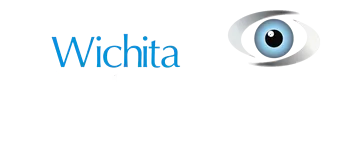Protecting your eyes can be as simple as following these healthy habits.
Read moreArticles
-
5 Healthy Habits To Pick Up for Better Eye HealthCategory: Newsletters
-
How To Prevent Computer Vision SyndromeCategory: Newsletters
Does computer vision syndrome make your eyes feel sore and dry after using your digital devices? These tips can help improve the comfort of your eyes.
Read more -
How To Properly Care For Your Contact LensesCategory: Newsletters
Do you wear contact lenses? These dos and don'ts can help you protect you avoid common contact lens problems.
Read more -
Preparing For Presbyopia Awareness Month in AprilCategory: Newsletters
Do you have to hold books farther and farther away from your face to see clearly? You may have presbyopia.
Read more -
The Development of Your Child’s Eyes (Each stage outlined from infancy to adulthood)Category: Newsletters
How does your child's eyesight change during the first year and beyond?
Read more -
New Year, New Vision in 2020Category: Newsletters
Tired of squinting when you read? Add an eye exam to your list of New Year's resolutions.
Read more -
AllergiesCategory: Protecting Your Eyes
Caused by the same irritants as hay fever, runny nose, coughing, and sneezing, eye allergies commonly affect those who suffer from other allergy symptoms. Not only do eye allergies cause discomfort, but they can also interfere with daily activities. Eye Allergy Causes Medically referred to as allergic
Read more -
Laser Cataract SurgeryCategory: We Can Help With, Cataracts
The only way to correct the clouded vision caused by advanced cataracts is surgical intervention. If you find yourself pursuing cataract surgery to remove one or both cataract-disease lenses, you may be wondering what surgical approaches are available for treatment. Although eye surgeons have successfully
Read more -
Cataract SurgeryCategory: We Can Help With, Cataracts
With cataract surgery, your ophthalmologist removes the cataract-diseased lens of your eye. The ophthalmologist then replaces your natural lens with an artificial one. The Procedure This outpatient procedure is generally safe and takes less than an hour. Your ophthalmologist will dilate your pupil
Read more -
How It WorksCategory: What is Vision Therapy
Vision therapy, also referred to as vision training, neuro-vision therapy, or vision rehabilitation, is an optometry subspecialty. Vision therapy is prescribed to develop, improve and/or enhance visual function so an individual’s vision system functions more smoothly. Vision therapy can be beneficial
Read more -
How It HelpsCategory: What is Vision Therapy
The goal of vision therapy is to treat vision problems that cannot be fully addressed through eyeglasses, contact lenses or surgery. For example, studies show that vision therapy may be beneficial for addressing eyestrain and other issues that can affect a child’s reading abilities. The human brain
Read more -
Signs and Symptoms ChecklistCategory: What is Vision Therapy
Vision therapy, which is also known as vision training or visual training, is an individualized treatment program that can help identify and correct perceptual-cognitive deficiencies that are impacting visual learning, focus, and concentration. Vision Therapy for Children: Checklist While individuals
Read more -
Medicated Eye DropsCategory: We Can Help With, Glaucoma
Treatment for glaucoma often begins with medicated eye drops. The goal of these medications is to lower the pressure in the eye (intraocular pressure) and prevent damage to the optic nerve. To gain the most benefits of these medications, use them exactly as prescribed by your eye doctor. Sometimes your
Read more -
What is GlaucomaCategory: We Can Help With, Glaucoma
Glaucoma is a condition characterized by excessive pressure in the eye, or intraocular pressure. This irregularly high pressure is due to a buildup of fluid in the eye. As intraocular pressure increases, it can compress the eye’s optic nerve, eventually leading to vision loss. Around 3 million people
Read more -
iStentCategory: We Can Help With, Glaucoma
The iStent Trabecular Micro-Bypass is a surgical device that is available for use in treating patients with mild-to-moderate open-angle glaucoma. Glaucoma is characterized by an excessive accumulation of fluid inside the eye, which leads to an increase in the inner eye pressure (intraocular pressure).
Read more -
KeratoconusCategory: We Can Help With, Corneal Disorders, Disorders
While keratoconus can happen at any stage of life, young people between the ages of 10 and 25 are most likely to develop this disorder. For individuals with keratoconus, their cornea, the clear layer in the front of your eye, gradually thins and begins to bulge outward. Keratoconus typically causes nearsightedness
Read more
